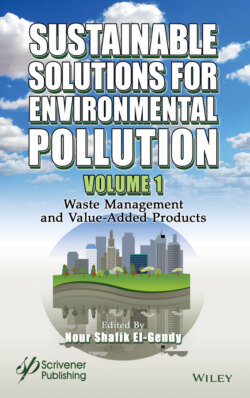Читать книгу Sustainable Solutions for Environmental Pollution - Группа авторов - Страница 23
1.3.6 Biopolymer
ОглавлениеPolymers have been recognized as one of the versatile class of materials due to their enormous contributions to our standard of living, quality of life, and human well-being across the globe (Rajan et al., 2018). However, the extensive usage of polymers has challenged solid waste management, concerning the adverse impact of plastic wastes on the ecosystem (Rajan et al., 2018; Urbanek et al., 2018). Specifically, for instance, the petrochemical-derived plastics have been extensively generated over the last decades, where their recalcitrance (e.g., strong resistance to biodegradation) posed significant threats to both environment and human health (Mostafa et al., 2020; Rajan et al., 2018). Hence, the production of environmental-benign polymers is highly necessary in order to address the challenges associated with solid waste management (Mostafa et al., 2020). Recently, renewable bio-based plastics, such as polyhydroxyalkanoate (PHAs) have received significant attention due to their potential application as a green alternative over other types of polymers (Liu et al., 2020a; Mostafa et al., 2020; Myung et al., 2017; Rajan et al., 2018). PHAs are non-toxic, biocompatible, and biodegradable, which have similar properties to conventional plastics (Kourmentza et al., 2017; Myung et al., 2014). The accumulation of PHA inside the bacterial cells provides a defense mechanism, when the bacterial growth is limited due to the stress conditions, such as nutrient imbalance (Chien et al., 2007; Myung et al., 2017). To date, many different variations in functional groups (e.g., methyl to tridecyl, unsaturated bonds, chain length, etc.) make PHA suitable biopolymers for various applications (Verlinden et al., 2007). The most common form of PHA is known as poly-3-hydroxybutyrate (PHB), which accumulates in various types of microbes by binding the -hydroxybutyrate monomers with ester bonds (Juengert et al., 2018).
Different fermentation methods can be utilized for the production of bio-based plastics like PHA. First, a sugar-based fermentation, which was the conventional method, has been implemented for the production of bioplastics (Jabeen et al., 2015; Rossell et al., 2002), but this conventional approach was not favorable due to reasons such as accumulation of shortchain volatile fatty acids (discussed in the previous sections) and the redox imbalance (e.g., restraining the product selectivity) (Lai and Lan, 2020). A newer fermentation approach using methanotrophs has been developed recently (Liu et al., 2020a; Myung et al., 2017). However, the major challenge of using methanotrophic fermentation for the production of bioplastics was the high production costs (e.g., feedstock, aeration), low yields, and mass transfer limitations (e.g., oxygen transfer, low methane solubility in water) (Liu et al., 2020a). To address such challenges, Myung et al. (2016) grew methanotrophs in water-in-oil emulsions (e.g., using the fact that methane was more soluble in oil than water) and increased the mass transfer efficiency, yielding higher production of bioplastics. However, utilizing oil may not be environmental-friendly and the high costs triggered by the aeration requirement and feedstock must still be considered (Liu et al., 2020a).
On the other hand, the EF system showed a high potential to greatly assist the production of bioplastics. To the best of the author’s knowledge, Lai and Lan (2020) were the only studies that investigated the application of the EF system on bioplastic production. In their study, Ralstonia eutropha H16 species went under growth-suppressing conditions (e.g., nitrogen starvation) for the production of PHB in two different bioreactor setups, a control (e.g., without any electrical energy input) and a test reactor (e.g., EF system). When the electrical current (10 mA) was applied along with a redox mediator (methyl blue), the PHB productivity remarkably increased by 30% (e.g., after 60 h of operation) along with higher final biomass residual (13.6 g/L vs. 11.8 g/L), higher maximum specific growth rate (mmax = 0.133/h vs. 0.127/h), and higher specific substrate utilization rate (qs = 0.187 g/g vs. 0.169 g/g) compared with the control. The enhancement of the PHB accumulation was due to the additionally supplied electrons and redox mediators accelerated the glycolytic pathway and redox cycling of NADH/NAD+, which boosted the adenosine triphosphate (ATP) generation, facilitating the biosynthesis of PHB (Lai & Lan, 2020).
